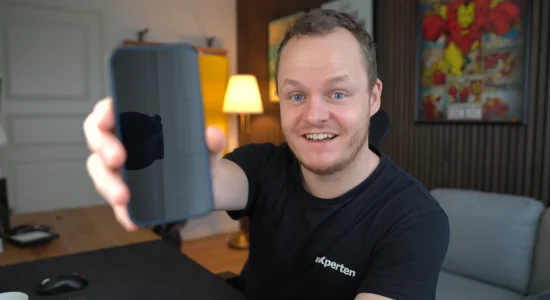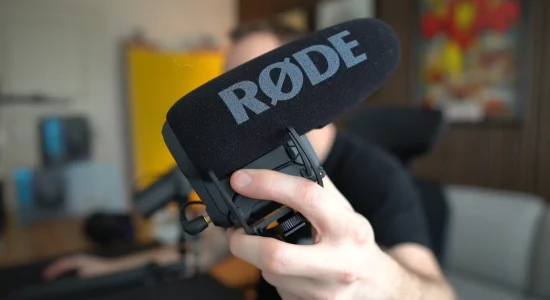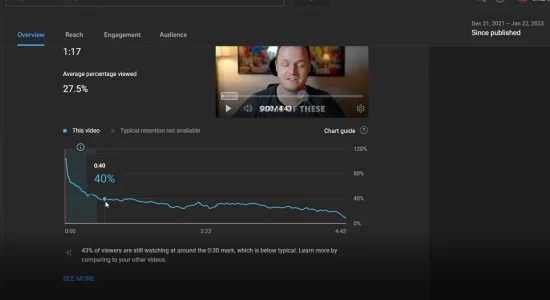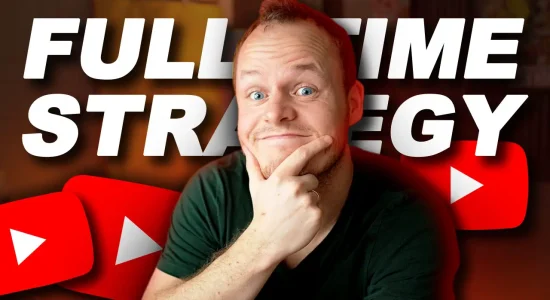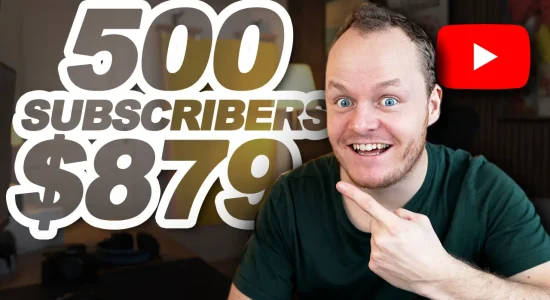YouTubers always look forward to getting sponsorships from companies or brands because they pay more than YouTube AdSense Ads.
Through these marketing deals, they promote a business to their viewers while generating a considerable income.
But how much do sponsors actually pay YouTubers?
The amount of money sponsors pay YouTubers depends on the number of subscribers to the channel, the niche, the type of content they want the influencer to run on their channel, the level of engagement as well as the kind of sponsor (big brands pay more than smaller ones).
In the rest of the article, I’ll explain the types of ways YouTubers are paid, an estimate of how much they should expect to earn from different sponsorship deals, the factors sponsors consider when coming up with a fee for YouTube creators and how YouTubers can get sponsorships.
How Sponsors Pay YouTubers
You may end up getting paid in different ways depending on the agreement you sign with the sponsor, but here’s what you can usually expect:
#1 Flat Fee
With a flat fee, the YouTuber is paid once for promoting the sponsor’s product or brand to their subscribers. You can’t expect any additional income no matter how successful your campaign is because you signed a contract to get paid a certain amount of money.
#2 Per Views
You should expect to get paid per 1000 views for the promotion.
For example, if you agree on $20 per CPM (cost per impression/views) and the video ends up getting 1 million views, you’ll receive $20,000.
To determine this amount, you need to divide the 1 million by 1000 and multiply it by 20.
#3 Commission & Affiliate
It’s a great way of earning passive income as with this type of advertising, you get to create evergreen content in which you place affiliate links.
Whenever your subscribers click on the link and make a purchase, you earn a commission.
So you can end up earning money even 3-5 years down the road from this sponsorship.
To get an idea of how much a YouTuber can earn from sponsorship deals, here’s a table showing a payment estimate:
| Payment Method | Pay |
| Per 1000 views (CPM) | $10-$50 |
| Per video | $200-$10,000 |
| Per view (CPV) | $0.01-$0.50 |
7 Factors That Sponsors Consider When Determining a YouTuber’s Pay
Before a company decides on how much they should pay you as an influencer, there are certain aspects they consider like:
#1 Type of Influencer
Influencers are ranked according to the number of subscribers they have. Nano-influencers have 1K-10K subscribers, micro 10K-50K, mid-tier 50K-500K, macro 500K-1 million, and mega, with over 1 million subscribers.
Most celebrities fall in this category, and unlike the nano and micro-influencers, macro and mega ones have the power to determine the amount of money they get paid for a sponsorship deal.
Moreover, they can also refuse a brand deal if they feel the incentive being offered is not worth it. In short, sponsors can mostly decide the amount of money to pay nano and micro-influencers but don’t have much say when it comes to bigger ones.
#2 Niche
If your content falls within a niche related to the advertiser’s, the pay can be lucrative. This is because the chances of your audience buying the sponsor’s products are higher..
For example, if you run a fitness channel and a sponsor wants you to promote their activewear or food supplements, you’ll earn more because those are products your audience will be interested in.
However, even if you have lots of subscribers, but your channel isn’t related to the sponsor’s brand, the payment will be less lucrative because the advertisers will be paying for more brand awareness than sales.
#3 Target Audience
The location of your audience can determine how much you get paid. A YouTube creator who gets more views from countries like the USA, Canada, UK, and Germany (which have a higher purchasing power) will earn more revenue than if the views came from developing countries in Asia and Africa.
This is because there’s high competition amongst advertisers to reach that market since the return on investment is high. Therefore, sponsors are willing to pay big to reach those markets, and in turn, YouTubers greatly benefit from that situation.
#4 Social Engagement Rate
Sponsors can look at the number of views your videos generate, the average video watch time, comments left, and shares when deciding on the price to pay for a partnership deal.
A channel that has a strong social engagement rate will attract higher pay because brands are assured of getting new customers from their advertising campaign.
#5 Type of Sponsorship
The way a YouTuber decides to market a sponsor’s product can also be a deciding factor when it comes to how much they get paid. Here are the different models you can use to promote a brand’s products:
a) Product Placements
This advertising model is more effective than doing a fully-integrated video on a product because the advertising is done in a subtle way. It enables the YouTuber’s audience to engage with the brand naturally and appealingly.
For example, if a creator wears clothes or shoes for a brand with its logo while creating a YouTube video, they’re marketing it through product placement. As a creator, you can negotiate a good deal with a sponsor and advertise their products in a number of your videos for better ROI on the brand’s end.
b) Dedicated Product Videos
In this type of video, the YouTuber will dedicate the content entirely to talking about the sponsor’s product instead of showcasing their usual content, and it’s more like the commercials you see on TV.
Doing this can be expensive as creators have to find the right location and do the production and editing themselves, not to mention this type of in-your-face marketing can turn off many subscribers, so they tend to charge lots of money for these videos.
c) Sponsored Mentions
With a mention, the YouTuber can let their audience know at the beginning of the video that a particular company sponsored it before going on with the rest of the video as usual.
The creator then is paid per 1000 views for the total number of times their audience watches the video.
d) Affiliate Marketing
Sponsors prefer this model because it allows them to proceed with peace of mind, as they don’t have to pay a penny unless a sale is actually made. So to minimize the risk, they will pay the creator depending on the sales generated.
A YouTuber can add an affiliate link or code in their video, and when a subscriber clicks on the link and buys a product, they can earn a profit from the sale. With this payment model, you may be able to keep earning overtime and may even surpass the amount you would have received from a flat fee.
However, there’s always a risk that your content doesn’t generate as many sales as expected, so take all variables into consideration before deciding.
e) Product Reviews
If your channel is dedicated to vacuums, a brand can ask you to review their product (e.g., their brand new vacuum cleaner). It can pay you more if you offer a more positive review than a negative one.
However, as a creator, you need to be genuine when doing your reviews rather than simply focus on the sponsorship because you may end up pushing away your audience with fake reviews, which can hurt your channel. Your viewers will quickly unsubscribe, and in turn, your revenue will lower.
So always choose the products you want to review wisely. They should be related to your content, and if possible, test or use them before you recommend them to your audience.
f) How-To Videos
These are used to teach the audience how a product works and how to use it. Many beauty influencers use these videos to promote advertisers’ makeup products by showing their audience how to apply them and how beautiful they can make one look.
The great thing about this kind of sponsorship is that you can create evergreen content that you can reap from even after the campaign has ended. You can keep on earning whenever someone buys the product since you have affiliate links embedded in the video.
#6 Time of Year
Towards the end of the year, between November and January (the festive season), sponsors will pay more because there is stiff competition on the same keywords. During this time, consumers are prone to buying lots of products, and all companies want to take advantage of this to increase their sales.
With that, the CPC (Cost-Per-Click) is higher than in other months because of the high demand for both influencers and the products that the brands sell, which in turn ensures that the YouTubers get to earn more money.
#7 Negotiation Skills of the YouTuber
Some creators have excellent negotiating skills that can get sponsors to agree on a deal that pays them a lot of money per video or 1000 views. On the other hand, you have those who may have the right number of subscribers and engagement on their channel but end up getting paid less than an influencer with fewer subscribers because they don’t know how to negotiate.
Brands are always looking to save money on advertising, so it’s upon you as a creator to show them your value and demand to get paid appropriately for it.
How To Attract Sponsors to Your YouTube Channel
Here’s how you can get sponsors to notice you:
Step 1: Grow Your Channel
Before you think of getting or attracting sponsorships on your channel, you need to grow it by creating as much quality content as possible. With great content (that is keyword optimized), you’ll be able to exponentially increase the number of your subscribers.
When your channel has grown, the sponsors will approach you on their own because they have now realized that you can effectively market their products or services.
Step 2: Market Your YouTube Channel on Other Socials
You should incorporate your channel in content posted on your social media pages and in article blogs on your website if you have one. This will expose the channel to more people who may not have known about it before.
Some businesses may reach out to you for a partnered sponsorship after checking out your channel and realizing that it can significantly benefit them.
Step 3: Reach Out to Sponsors
If you are not getting enough or any sponsorships on your channel even after following the suggestions mentioned above, you should instead contact the brands you want to partner with.
You can search for them on YouTube and Google before writing to them directly through email, asking to promote their products. When you directly reach out to sponsors, ensure that you include your media kit with:
Your personal contacts so that advertisers can reach out to you if interested:
- Your niche
- Target audience
- Link to your channel
- Number of subscribers
- Some of your best videos showcasing the number of views in addition to the average watch time
- Past sponsorships and statistics of well the campaigns went
- Why are you the best person for them to partner with?
Extra Idea 1: Partner With an Influencer Agency
The agency will connect you with sponsors that suit your niche and offer advice on how much you should get paid for your services.
You can apply to these agencies, such as BrandConnect, and if you’re eligible, they can sign you up. When they receive a sponsorship deal that suits you, they can alert you via email so that you can take it up.
Extra Idea 2: Join an Affiliate Network
As for affiliate networks, you can join their programs and use their platforms to reach out to the companies on their sites. Besides, the businesses there may also reach out to you if they feel that you are a good fit for their brand and this approach will allow you to secure a passive stream of revenue for years to come.
Conclusion
When it comes to how much sponsors pay YouTubers, there is no definite answer as the income you earn can vary, depending on how influential you are, the popularity of your channel, and the type of sponsor you get.
Therefore, you need to grow your audience and encourage engagement on your channel in addition to negotiating well to earn higher pay.


